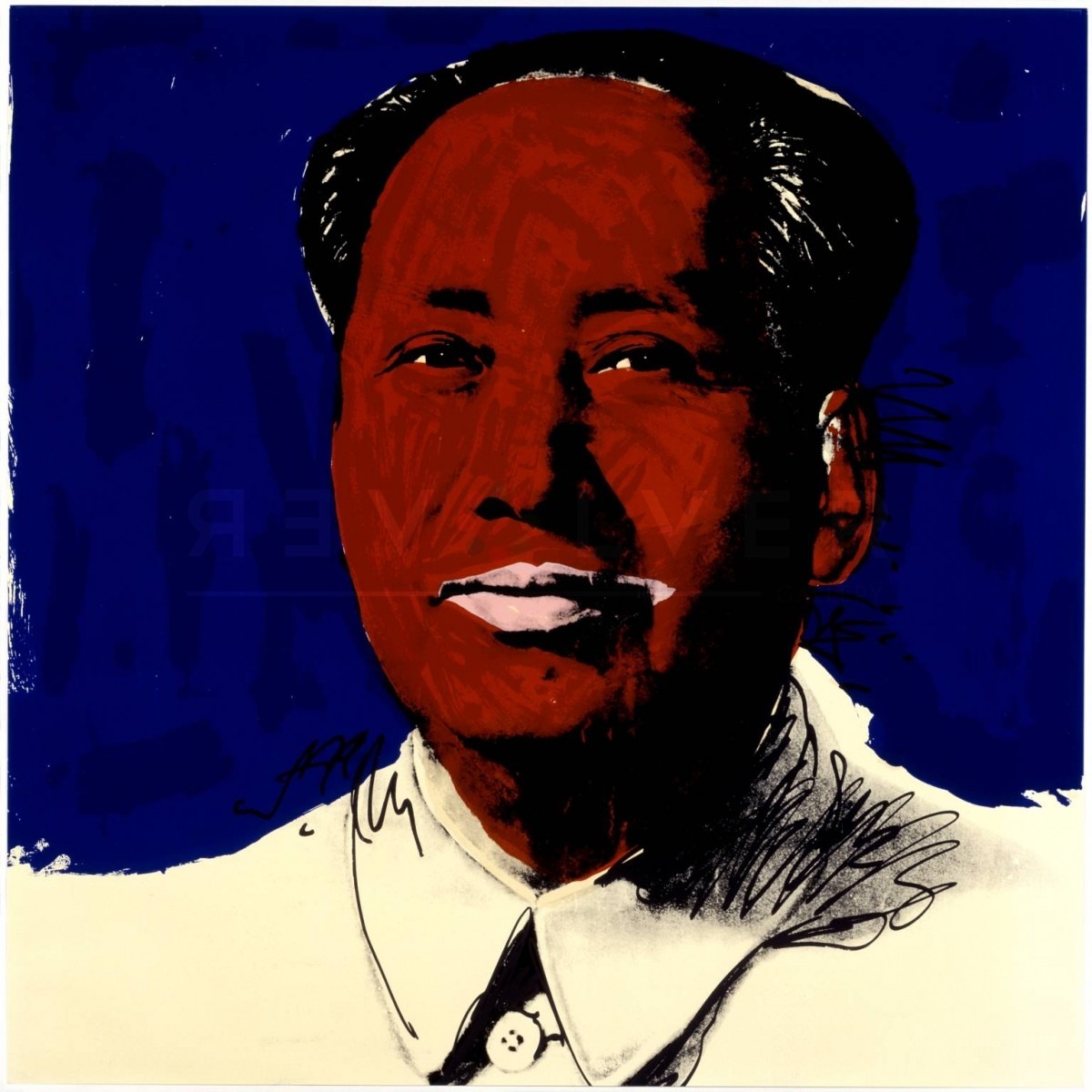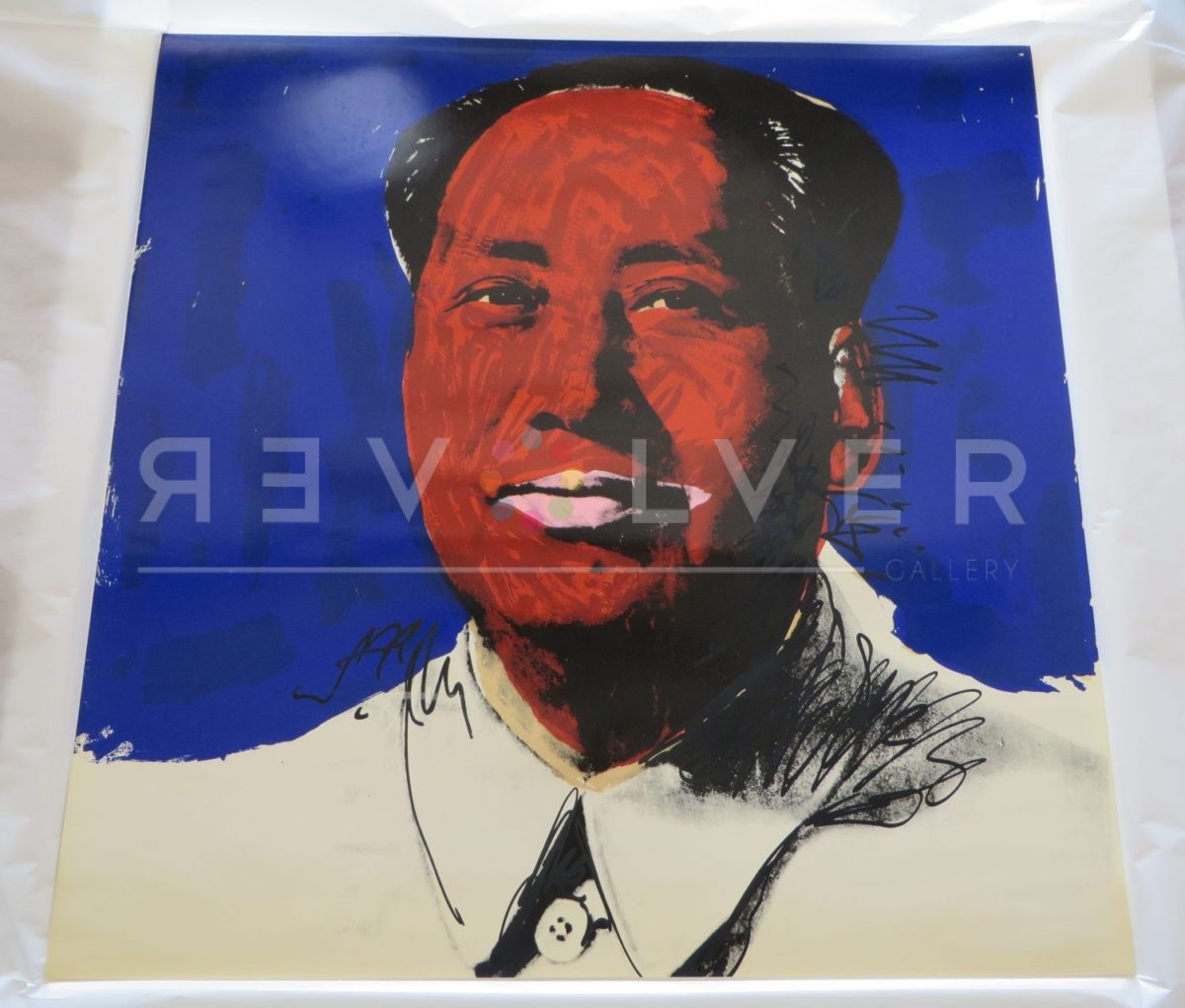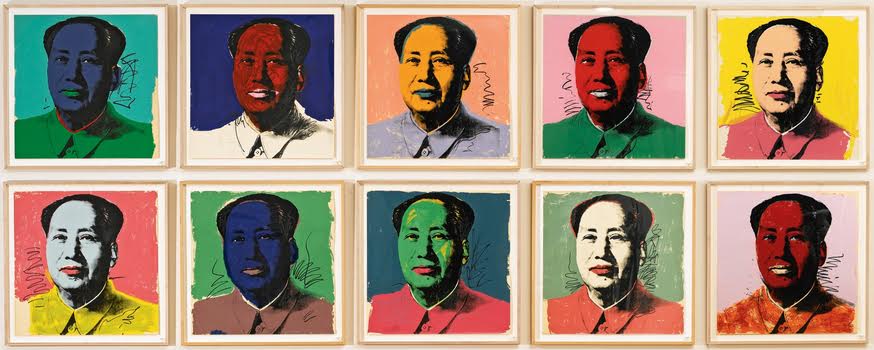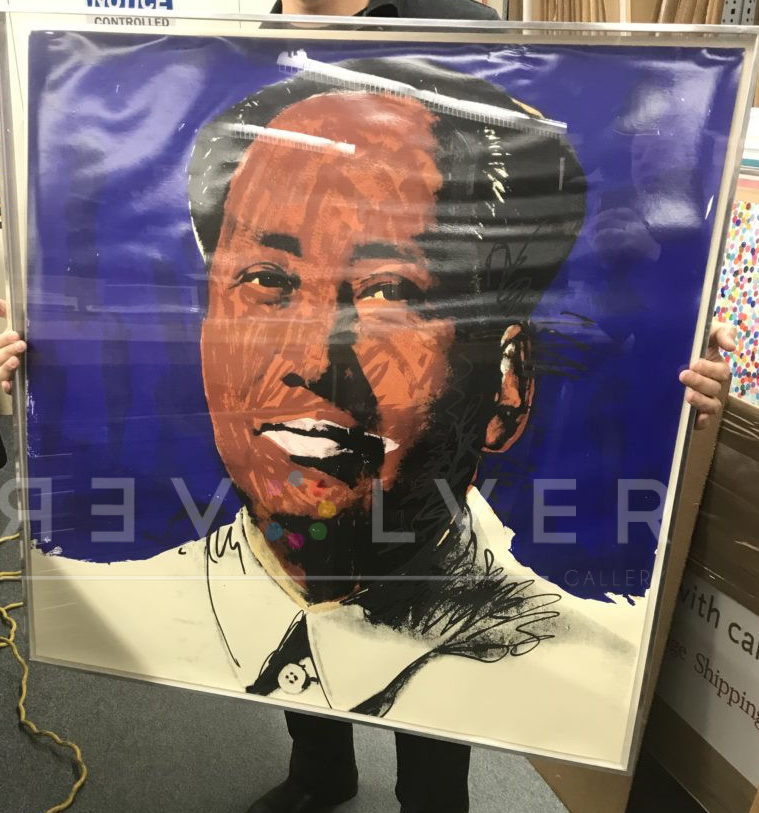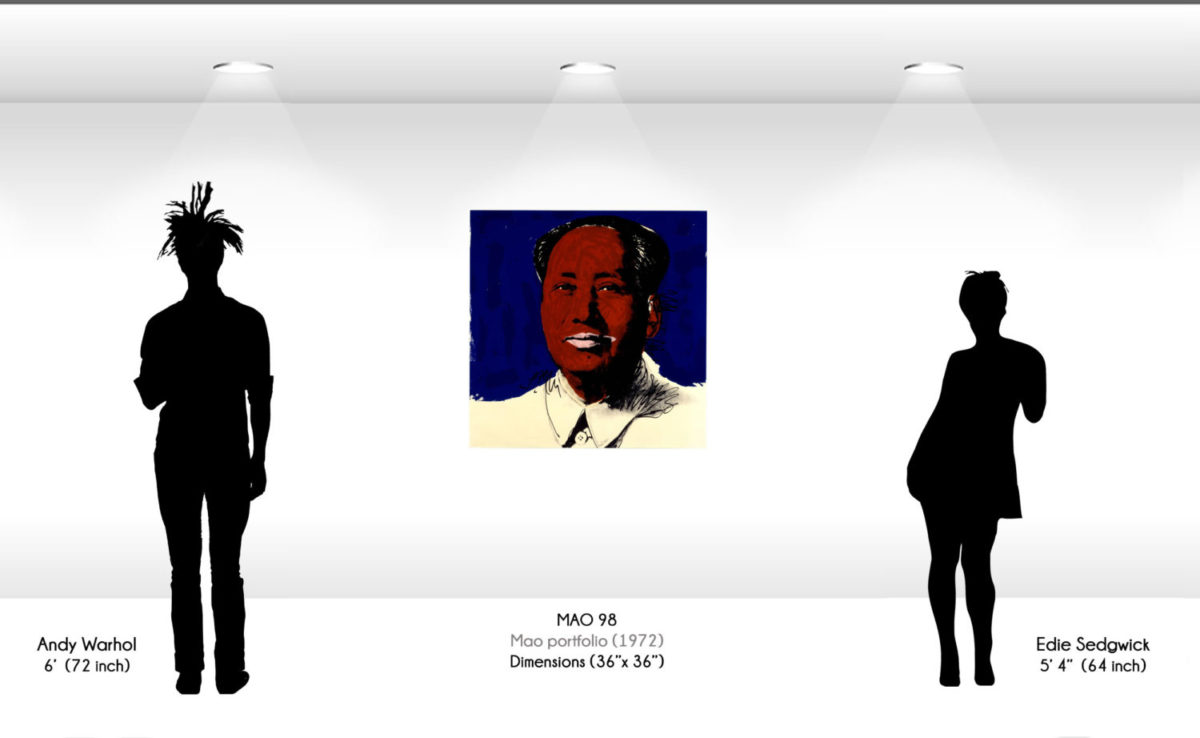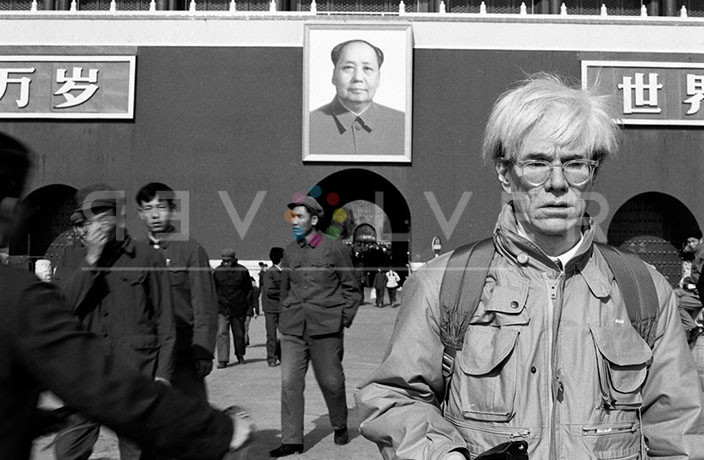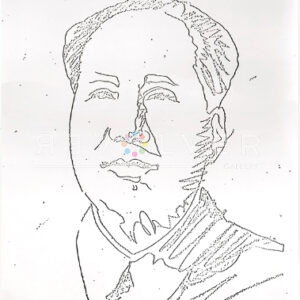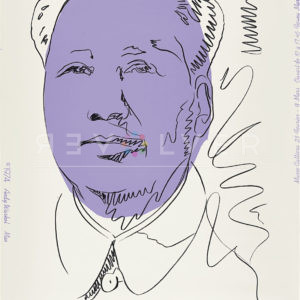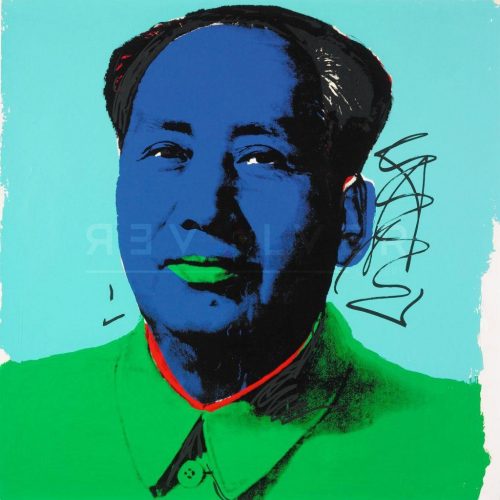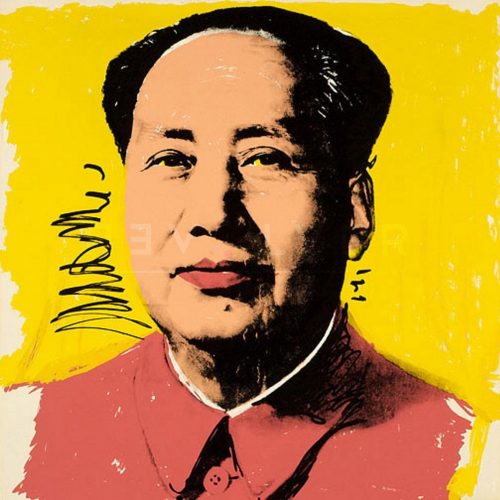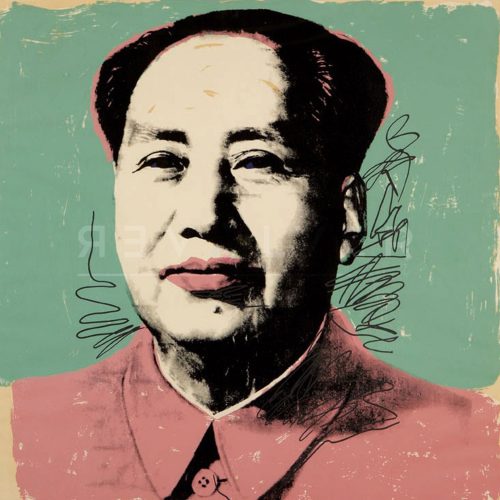Mao 98 by Andy Warhol is an iconic screen print from the artist’s Mao portfolio, completed in 1972. This print may be referred to as the “blue-red Mao” in reference to the face and the background. Depicting the founder of the People’s Republic of China, Mao is certainly one of Warhol’s more controversial series, as well as one of his most well known works of portraiture.
Mao Zedong, known for his role in the Cold War, ruled China from 1949 to 1976. During this period, President Nixon became the first U.S president to visit China in 1972, ending over two decades of diplomatic isolation. The work is still a controversial subject today as 10 of the Mao prints were censored in “Andy Warhol: 15 Minutes Eternal” exhibition in China in 2013, being removed from mainland exhibit stops by the Chinese government.
Warhol gained recognition, partly, for his iconic celebrity portraits. Prior to this portfolio, Andy had taken a break from creating portraits and focused on publishing works like Flowers. But he had an urge to return to portraits and wanted to draw the most famous person at the time. The decision to paint Mao came from a conversation with Bruno Bischofberger, who suggested Warhol paint important figures of the 20th century. He mentioned Albert Eisntein (who Warhol painted in his Jews series), but Warhol read in Life magazine that Chairman Mao was the most famous person in the world. His proclivity to paint powerful figures is evident all throughout his body of work. In the 1970s and 80s, Warhol painted characters like Jimmy Carter, Queen Elizabeth, and Sigmund Freud.
Warhol officially decided to use Mao as his subject once Nixon announced his visit to China. Warhol made a satirical remark that “Since fashion is art now and Chinese is in fashion, I could make a lot of money… Mao would be really nutty not to believe in it, it’d just be fashion but the same portrait you can buy in the poster store”. A year later, Warhol published his Mao series, proving to be one of his greatest accomplishments.
The chosen portrait of Mao was widely produced in China, and is immediately recognizable. The photo was extremely interesting to Warhol, because of its proliferation and its similarity to a silkscreen. This collection is yet another play on Warhol’s interest between parallels among political propaganda and mass advertising.
When compared to Warhol’s other prints, the textured background and face in Mao 98 is unique. Mao 98 also ironically embodies the colors of the American flag, red white, and blue. The bright colors develop a glamorous image of Mao—as if he is wearing makeup. The bold red minimizes Mao’s hair, but emphasizes the subject’s white lips. Andy adds hand-drawn detailing around the ear and neck to create depth. Warhol successfully uses bright colors and bold detailing to turn a communist leader into a pop-art-icon.

